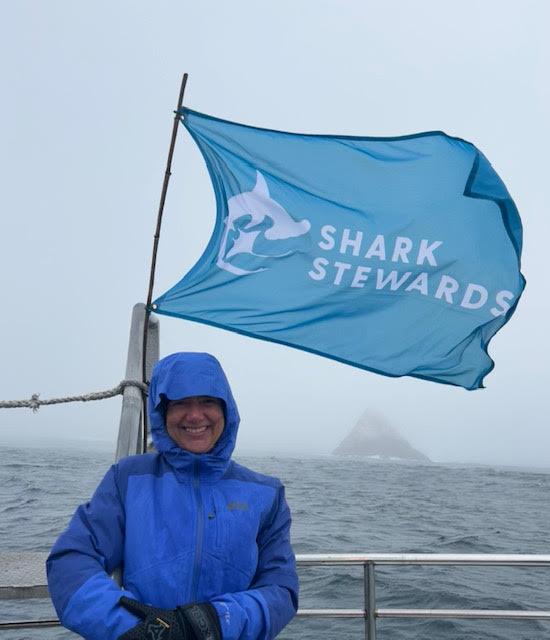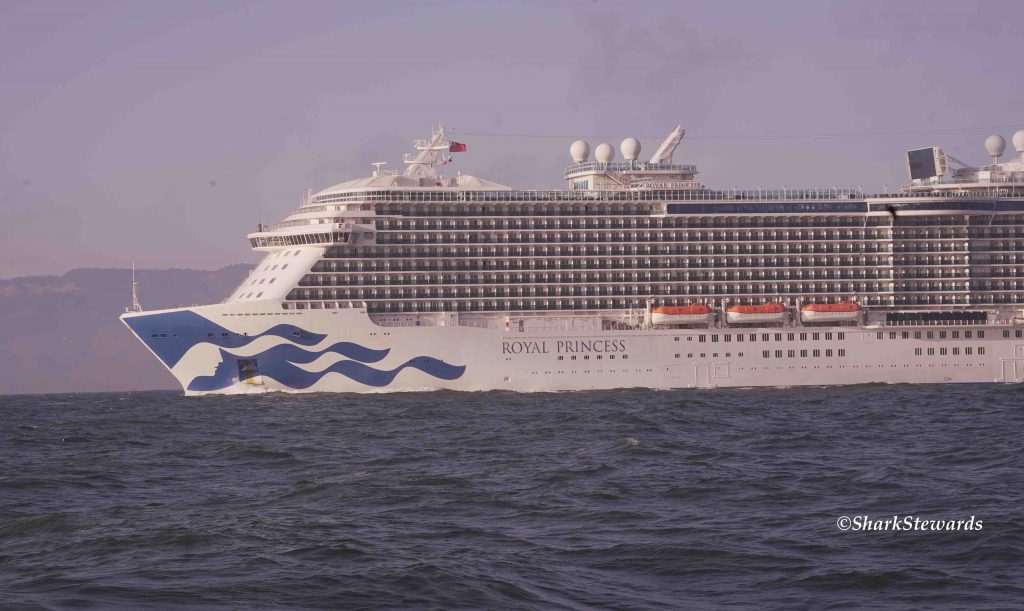Under grey skies and calm winds our crew departed the historical Fisherman’s wharf, past the brightly painted Italian Feluccas, sails furled to fish no more, and past pier 45, the last commercial fishing pier where stacks of crab pots are prepared for the winter season. A bull California Sea Lion rolls in our wake, and squads of glossy black pelagic cormorants, sleek brown pelicans and blindingly white western gulls (Bay gulls) rest on the breakwall as we turn to port towards the Golden Gate. Rounding Point Bonita we see the sound signal situated about fifty feet above the waves, the light itself obscured by the fog over 100 feet above the surface. First built in 1835 and the 3rd lighthouse operational along the coast following the Farallon light and Alcatraz, the original lighthouse was 300 feet, placed inconspicuously in the fog. Moved down hill to 128 feet high later in 1877, the operational light house remains obscured today, visible only to our ship’s radar.

A low mist obscures the red towers but beneath, black backs of harbor porpoises pierce the surface in furtive forays. The remnant of a northwest swell breaks out on the bar, so we head safely north inside the deepwater Bonita channel along the Marin shoreline. Too fat to fly, these common murres dive out of the way as we cut through the grey waters. Reaching up inside Duxbury reef, the wind has not come up so we turn west and cross the Gulf among rolling swells and a swirling, textured sea surface. The seabirds become more common and far to weather I see the white water of a whale’s breach, too far to pursue.

Finally the island emerges from the low fog. We can hear the waves washing up the eroded cliffs before seeing the white wash. Above the surface, the craggy sea cliffs are also painted white from the excrement of a hundred thousand nesting seabirds. Skirting past the Great Murre Cave and around Saddle Rock we deploy Snuffy, our seal shaped decoy onto the surface of Mirounga Bay. The water is clear, perhaps the plankton is blown clear by the currents, and we can see the white granite blocks and sand peppered by red urchins fifty feet below. Permitted under NOAA’s White Shark Stewardship Project, we are charged with educating the public on shark conservation and the benefits of our Greater Farallones National Marine Sanctuary. Our excursions identify white sharks by their scars, markings and dorsal fin, allowing us to identify individuals, and provide the data to Stanford University’s TOPP program and the Sanctuary. Reviewing the footage later, we often see sharks not spotted by our guests, but in this case the water is too clear, and the sharks are not fooled.

We venture out to the end of the continental shelf where the depth plummets from 200 feet to over a 1500 feet down into the abyss. Blue whales have been reported here recently and we spy several blackfooted albatrosss, scores of sooty shearwaters and fulmars, all pelagic seabirds, sailing in the building breeze. At last we turn back towards shore and run past hundreds of seabirds feeding on the surface. Outside the turning circle where the ships converge to enter the shipping channel into the Golden Gate we see hundreds of whirling seabirds, dipping and diving for baitfish.

Humpback whales steam among the fish, spouts blowing in the wind as they forage in the waves. We find the whales often feeding in or close to the shipping lane. Each year as many as 200,000 ships enter and exit the Golden Gate, and according to the non-profit Point Blue Conservation Science, as many as 83 humpback, blue and fin whales are killed by ships on the West Coast. Because their bodies sink quickly, only a percentage are seen and reported, such as the 31 foot male that washed ashore at Fort Bragg last week. Because of this, NOAA and shipping companies have arrived at an agreement to reduce their speed below ten knots through the Sanctuary but the agreement is voluntary. Nearing the headlands a Princess liner steams like a huge white wedding cake building speed towards the whales. We hope the whales are able to avoid this and other ships steaming through our Sanctuary. The sun appears beneath the clouds as we at last turn back to shore, another successful adventure into our Greater Farallones National Marine Sanctuary.

These adventures support our youth ocean education program.